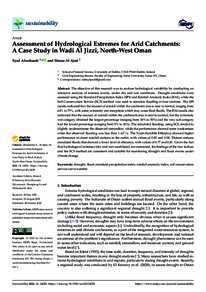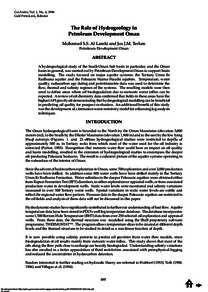Document
Assessment of hydrological extremes for arid catchments: a case study in Wadi Al Jizzi, north-west Oman.
Identifier
DOI: 10.3390/su142114028
Source
Sustainability (Switzerland). v. 14, 21, 14028
Contributors
Al-Ajmiyah, Manar., Author
Country
Switzerland
City
Basel
Publisher
MDPI.
Gregorian
2022-11-01
Language
English
Subject
English abstract
The objective of this research was to analyse hydrological variability by conducting an intensive analysis of extreme events, under dry and wet conditions. Drought conditions were assessed using the Standard Precipitation Index (SPI) and Rainfall Anomaly Index (RAI), while the Soil Conservation Service (SCS) method was used to simulate flooding at four stations. The SPI results indicated that the amount of rainfall within the catchment area is near to normal, ranging from 64% to 75%, with some extremely wet exceptions which may cause flash floods. The RAI results also indicated that the amount of rainfall within the catchment area is near to normal, but the extremely wet category obtained the largest percentage (ranging from 36% to 50%) and the very wet category had the lowest percentage (ranging from 9% to 36%). The simulated flooding, using SCS, tended to slightly underestimate the observed streamflow, while the performance showed some weaknesses when the observed flooding was less than 1 m3/s. The Nash–Sutcliffe Efficiency showed higher performance at closer rainfall stations to the outlet, with values of 0.92 and 0.94. Distant stations simulated floods that showed a lower level of efficiency, with values of 0.77 and 0.81. Given the fact that hydrological extremes (dry and wet conditions) are connected, the findings of the two indices and the SCS method are consistent and suitable for monitoring drought and flood events under climate change.
ISSN
2071-1050
Resource URL
Category
Journal articles


